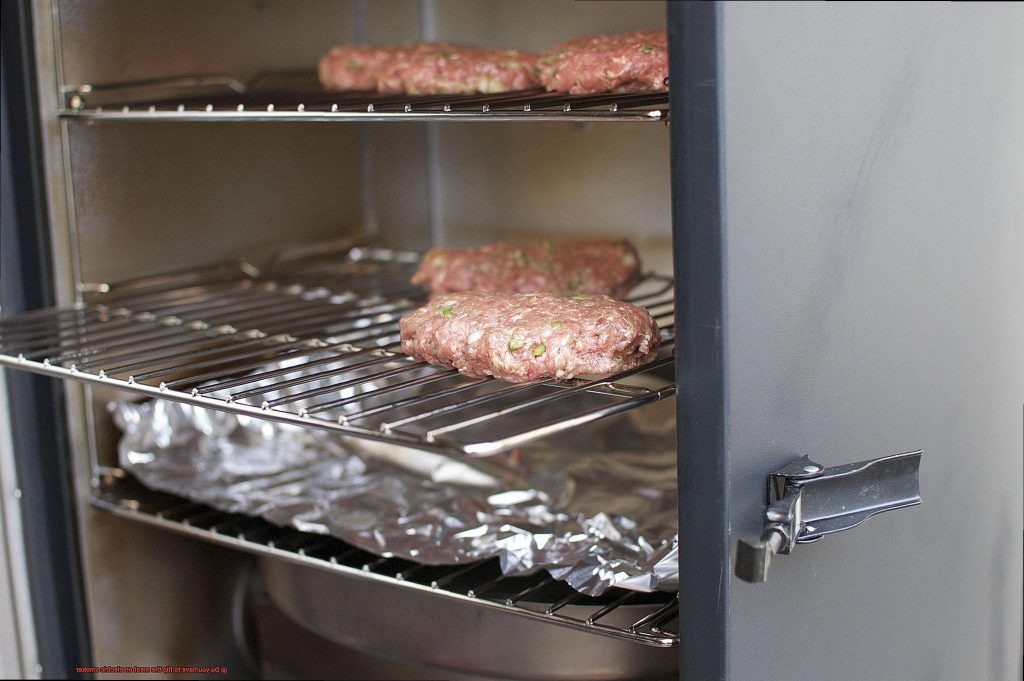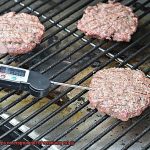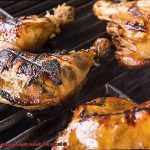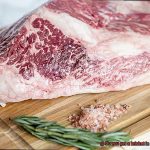Are you a meat-obsessed foodie who craves the delicious smoky flavor of ribs, briskets, or pork shoulders? If so, you’ve probably found yourself asking the age-old question: “Do you have to flip the meat on electric smoker?” Well, my friend, the answer is not as straightforward as you might think. But don’t worry – we’re here to help you navigate this mouth-watering mystery.
If you’re new to using an electric smoker, flipping might be a foreign concept. Essentially, it means turning your meat over halfway through cooking to ensure that heat and smoke are evenly distributed throughout. This is a common practice when grilling or smoking on traditional smokers, but things work a little differently with electric smokers.
In this blog post, we’ll give you the lowdown on whether or not flipping is necessary when using an electric smoker. We’ll explore the pros and cons of flipping and share some insider tips to help elevate your smoking game. Whether you’re a seasoned pitmaster or just starting out on your smoking journey, we’ve got all the juicy details for you. So sit back, crack open a cold one (or two), and let’s dive into the wonderful world of electric smoking.
Contents
Do You Have to Flip the Meat on an Electric Smoker?
While many experienced pitmasters suggest leaving the meat undisturbed throughout the entire cooking process to achieve the best results, flipping can be beneficial for certain cuts of meat. For instance, thicker cuts like brisket or pork shoulder may require flipping once halfway through the cooking time to ensure even cooking on both sides. Additionally, flipping can help ensure that all sides are evenly coated if you are using a rub or marinade on your meat.
On the other hand, thinner cuts such as chicken breasts or pork chops may cook evenly without flipping. Flipping these cuts may not be required as they will cook through evenly without needing to be turned over.
It’s important to note that whether or not you choose to flip your meat comes down to personal preference and experimentation. Some pitmasters swear by leaving the meat untouched, while others prefer to flip it for even cooking. Whichever method you choose, pay attention to your meat and adjust your technique accordingly for the best results.
Another factor to consider is the thickness of the meat you are cooking. Thicker cuts of meat may require flipping to ensure even cooking, while thinner cuts may not need to be turned over.
Why Some Pitmasters Suggest Leaving the Meat Undisturbed
First and foremost, flipping your meat can cause it to lose moisture and flavor. When you flip the meat, the juices inside get redistributed, which can make the meat dry out or become less flavorful. But by leaving the meat untouched, the juices stay inside and help to keep the meat moist and tasty. And who doesn’t love a juicy, flavorful piece of smoked meat?
Additionally, some experienced pitmasters believe that flipping the meat can disrupt the cooking process. Electric smokers have a specific temperature range that must be maintained to cook meat properly. Flipping the meat can cause fluctuations in temperature and disrupt the cooking process, leading to unevenly cooked or burnt meat. By leaving the meat undisturbed, you can maintain a consistent temperature throughout the cooking process and achieve mouth-watering results every time.
But that’s not all – leaving the meat untouched also allows for better bark formation. Bark is the crispy outer layer that forms on smoked meats and is highly prized by barbecue enthusiasts. By leaving the meat alone, you can ensure that a nice bark develops evenly all around the meat. And let’s face it – who doesn’t love a beautiful, flavorful bark on their smoked meats?
When Flipping the Meat May be Beneficial
As you embark on your journey to smoke meat on an electric smoker, one question that may arise is whether or not to flip your meat. While there is no definitive answer to this question, flipping your meat can be beneficial in certain situations.
Firstly, flipping the meat ensures that both sides are cooked evenly. This is especially crucial when smoking large cuts of meat such as brisket or pork shoulder. By flipping the meat halfway through the cooking process, both sides are exposed to the same amount of heat and smoke, resulting in a perfectly cooked and tender piece of meat.
Secondly, flipping the meat can prevent it from sticking to the grates of your electric smoker. Meats with high sugar content like ribs or chicken wings tend to stick easily. However, by flipping the meat every 30 minutes or so, you can prevent sticking and ensure even cooking on both sides.
Moreover, flipping the meat can enhance its flavor and texture. By exposing it to fresh smoke and allowing juices to redistribute evenly throughout the meat, you can achieve a juicier and more flavorful final product. In addition, flipping the meat can also help create a beautiful bark on the outside of your meat.
However, keep in mind that flipping is not always necessary. It largely depends on personal preference and the type of meat being smoked. Some pitmasters suggest leaving the meat untouched to avoid moisture and flavor loss or disruption of the cooking process.
Tips for Flipping the Meat on an Electric Smoker
Smoking meat on an electric smoker is a fantastic way to achieve that smoky, flavorful taste. But when it comes to flipping the meat, there are differing opinions. Some pitmasters argue that flipping is unnecessary, while others swear by it. If you’re looking for tips on how to flip your meat on an electric smoker, then keep reading. Here are five tips to help you get the best results:
Use tongs
When flipping your meat on an electric smoker, it’s crucial to use tongs instead of a fork or other utensil. Tongs provide a better grip and won’t puncture the meat, which can cause juices to escape. This will ensure that your meat stays juicy and flavorful.
Don’t flip too often
Flipping your meat too often can cause it to dry out, so it’s best to flip once or twice during the cooking process. This will help ensure that your meat stays moist and doesn’t lose its flavor.
Wait until a crust forms
When smoking meats, a crust will form on the surface, which helps seal in juices. Waiting until this crust has formed before flipping the meat will help ensure that your meat stays juicy and doesn’t dry out.
Use a temperature probe
To ensure that your meat is cooked evenly, use a temperature probe to check the internal temperature. This will also help you determine when it’s time to flip the meat. By using a temperature probe, you’ll be able to achieve perfectly cooked meat every time.
Use a drip pan
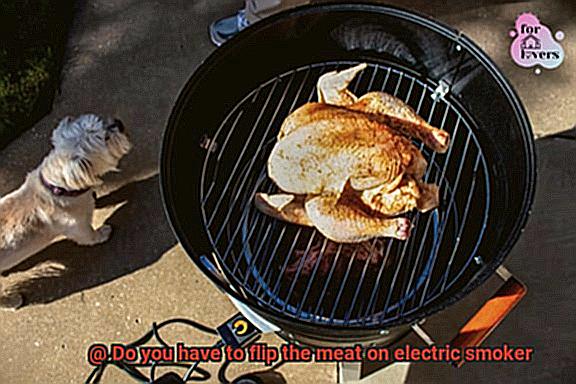
Placing a drip pan under the meat can help catch any juices and prevent flare-ups. This can make flipping the meat easier as it won’t be sitting in its own juices, but it also ensures that your smoker stays clean and prevents any potential flare-ups from occurring.
The Pros and Cons of Flipping the Meat on an Electric Smoker
You’ve likely grappled with the question of whether or not to flip your meat during the smoking process. As an expert on the pros and cons of flipping the meat on an electric smoker, let me guide you through this age-old debate.
Let’s start with the pros. Flipping your meat can help ensure even cooking on both sides, preventing any potential hot spots or uneven cooking. It can also promote a better bark formation by allowing both sides to dry out evenly. Moreover, if you’re smoking poultry or other meats with skin, flipping it can help ensure that both sides get deliciously crispy – a hallmark of excellent barbeque.
However, there are also some cons to consider. Flipping your meat can cause moisture to evaporate, resulting in drier, less flavorful meat. Opening the smoker to flip the meat can also cause temperature fluctuations, which can adversely affect the overall cooking process. Additionally, flipping the meat can disturb the smoke profile, which is crucial for achieving that authentic smoky flavor.
So, what’s the verdict? Ultimately, whether or not to flip your meat on an electric smoker depends on personal preference and what type of meat you’re cooking. For meats with skin or those that require a crispy exterior, flipping may be beneficial. However, for more delicate or fatty meats, leaving them undisturbed may result in juicier and more flavorful results.
If you do decide to flip your meat, here are some tips to keep in mind: use tongs instead of a fork to avoid piercing the meat and losing moisture; don’t flip too often – once halfway through the cooking process is sufficient; wait until a crust forms before flipping to prevent sticking; use a temperature probe to ensure perfectly cooked, juicy meat every time; and always use a drip pan to catch any excess juices.
Best Practices for Smoking Meat on an Electric Smoker
Smoking meat on an electric smoker is a beloved cooking method that has been enjoyed by many for years. However, achieving perfectly cooked, mouth-watering results involves following best practices. As an expert in electric smokers, let me guide you through the key tips for smoking meat on an electric smoker.
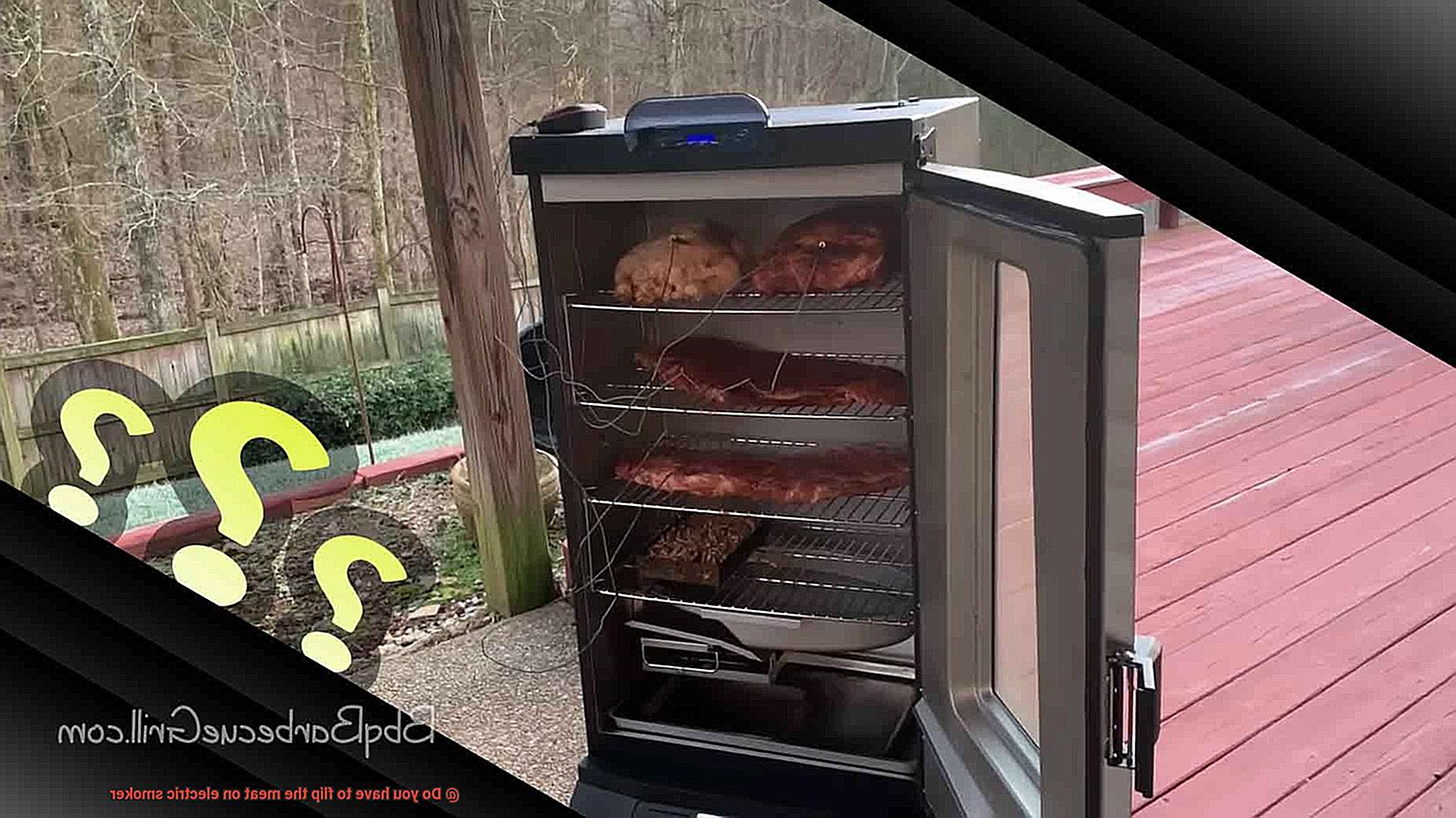
One of the most common questions asked by those new to electric smokers is whether to flip the meat during smoking. The answer varies depending on the type of meat being smoked and personal preference. For brisket, it is recommended to flip it to ensure even cooking on both sides. However, for pork shoulder, flipping isn’t necessary. Always use tongs or a spatula instead of a fork to prevent piercing the meat and causing it to become dry and tough.
Seasoning your meat properly is essential for achieving that delicious flavor. Make sure you season your meat before smoking to ensure the flavor penetrates throughout the meat.
Temperature plays a crucial role in successful smoking. Preheat your electric smoker to the correct temperature and maintain a consistent temperature throughout the cooking process to avoid over or undercooking your meat.
To add that smoky flavor we all love, use wood chips or pellets designed for smoking. Experiment with different types of wood to find which flavors work best for you and your taste buds.
In summary, follow these best practices for smoking meat on an electric smoker: season your meat before smoking, preheat your smoker to the correct temperature, maintain a consistent temperature throughout the cooking process, use wood chips or pellets designed for smoking, and flip your meat halfway through cooking time if necessary.
How to Maintain Your Electric Smoker
Maintaining your electric smoker is crucial to ensure that it lasts for years and continues to produce mouth-watering smoked meats. Here are five essential steps to properly maintain your electric smoker:
Step 1: Clean after every use
Cleaning your electric smoker after every use is critical to prevent any buildup of ash or grease. Use a damp cloth or sponge to wipe down the interior and exterior of the smoker, and thoroughly clean the racks and drip pan as well. Stubborn residue can be removed with a wire brush or scraper, and a mild soap solution can be used for tough spots.
Step 2: Empty the ashtray
If your electric smoker has an ashtray, make sure to empty it after every use. This will prevent any buildup of ash, which can affect the smoker’s efficiency and performance.
Step 3: Check the heating element
The heating element is one of the most important components of your electric smoker. It’s essential to check it regularly for any signs of damage or wear and tear, which can affect its performance. If you notice any issues, replace the heating element immediately.
Step 4: Keep the smoker covered
When not in use, cover your electric smoker with a weather-resistant cover to protect it from the elements. This will help prevent rust or other damage caused by exposure to moisture or sunlight.
Step 5: Store in a dry place
Always store your electric smoker in a dry place when not in use. If you live in an area with high humidity or rainfall, consider purchasing a weatherproof cover to protect it from moisture and other environmental factors.
Troubleshooting Common Issues with Smoking on an Electric Smoker
Smoking meat on an electric smoker is a delicious way to infuse flavor into your favorite cuts. However, it’s not uncommon to run into some common issues during the smoking process. One such issue is whether or not to flip the meat while smoking. But fear not, as an expert in troubleshooting common issues with smoking on an electric smoker, I’m here to provide you with some helpful insights.
To start, it’s important to note that flipping your meat on an electric smoker isn’t always necessary. The heat and smoke generated by the smoker should be sufficient to cook the meat evenly. However, there are situations where flipping can be beneficial.
For instance, if you’re smoking a large piece of meat like a brisket or a pork shoulder, flipping it halfway through the cooking process can help ensure even cooking throughout. This is because the heat and smoke may not reach all parts of the meat equally, and flipping it can address this issue.
Similarly, if you’re using a vertical smoker with multiple racks, flipping the meat can help ensure that all parts of each piece of meat are cooked evenly. This is because heat and smoke may not distribute evenly between the different racks.
But be careful when flipping your meat. Use tongs or a spatula to avoid piercing the meat and losing precious juices. And don’t forget about food safety – make sure to wash your hands thoroughly before and after handling raw meat to prevent cross-contamination.
Conclusion
In the end, the decision to flip your meat on an electric smoker is a personal one that depends on your desired outcome. While some swear by flipping for even cooking and better bark formation, others argue that it can cause moisture and flavor loss.
If you choose to flip your meat, remember to use tongs instead of a fork to avoid piercing the meat and losing precious juices. Flip only once or twice during the cooking process, waiting until a crust forms before flipping again. A temperature probe will help ensure perfectly cooked meat every time, while using a drip pan catches any excess juices for added flavor.
To achieve mouth-watering results when smoking on an electric smoker, follow best practices such as seasoning your meat before smoking, preheating your smoker to the correct temperature, maintaining consistency throughout the cooking process, using wood chips or pellets designed for smoking, and cleaning your smoker after every use.
Should you encounter any issues such as uneven cooking or sticking meat, consider flipping halfway through or using a drip pan.

